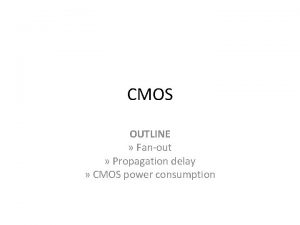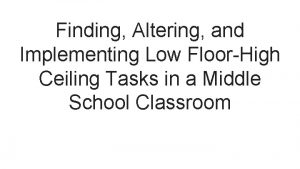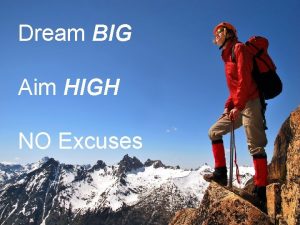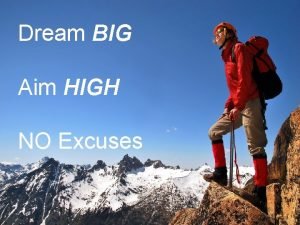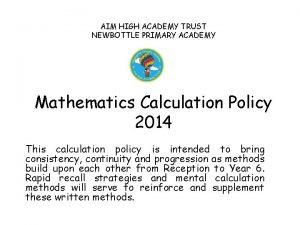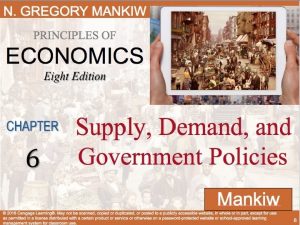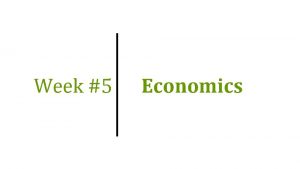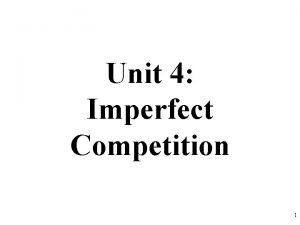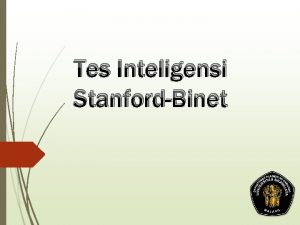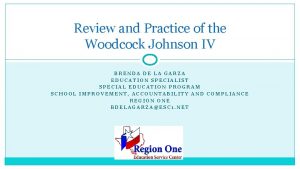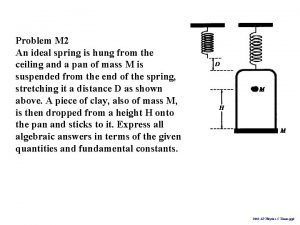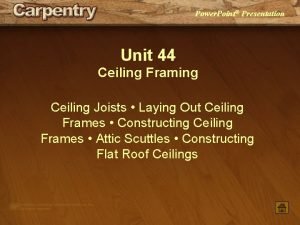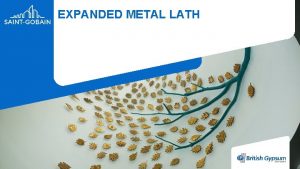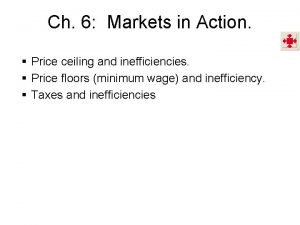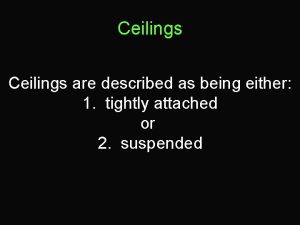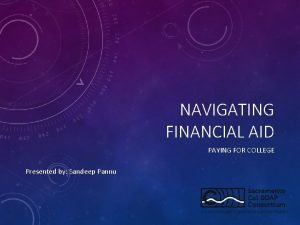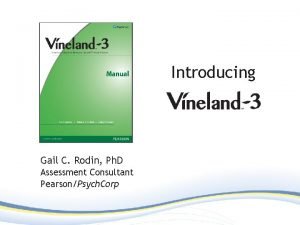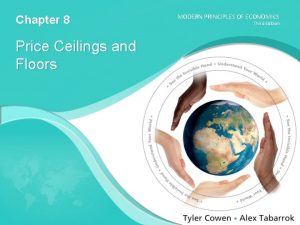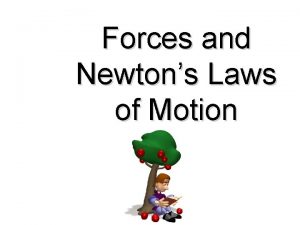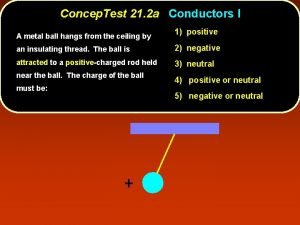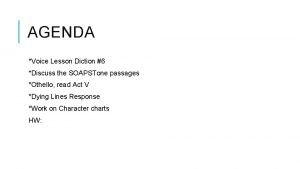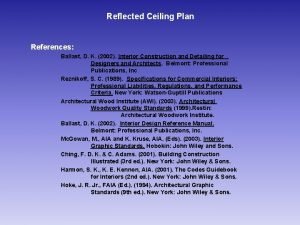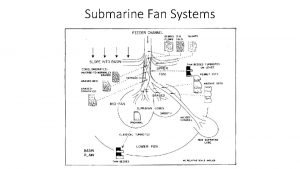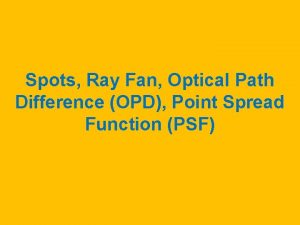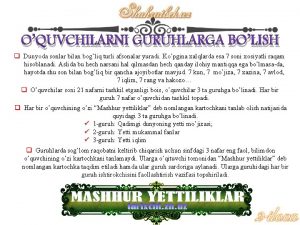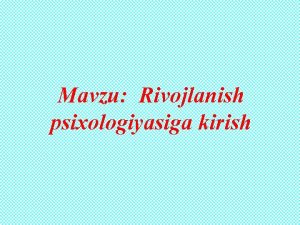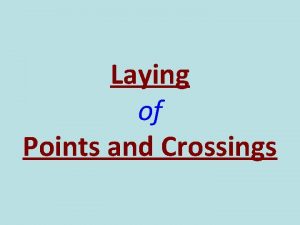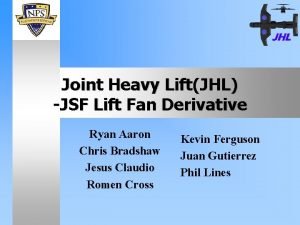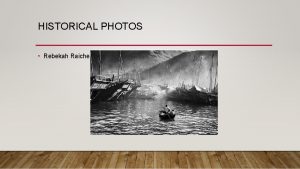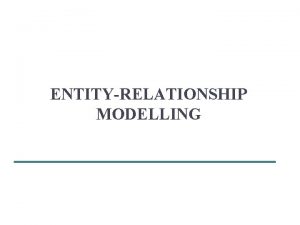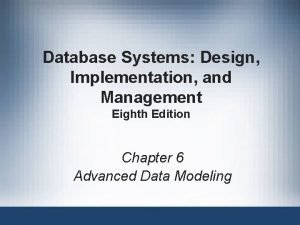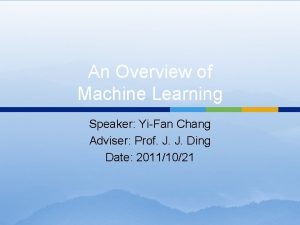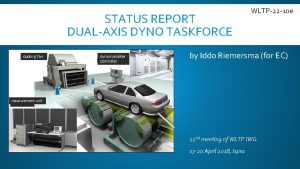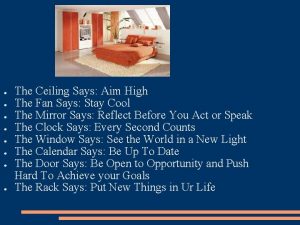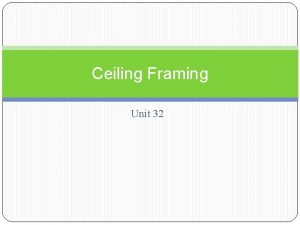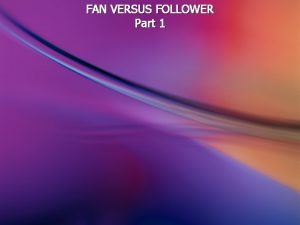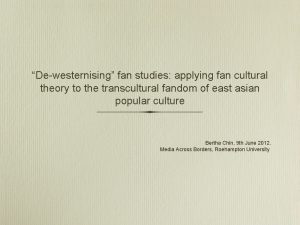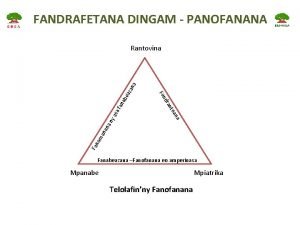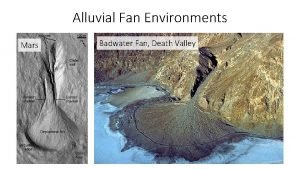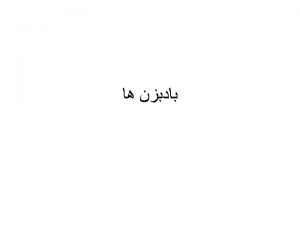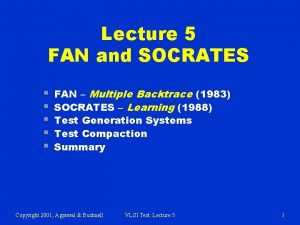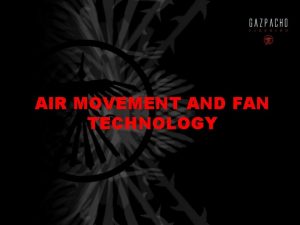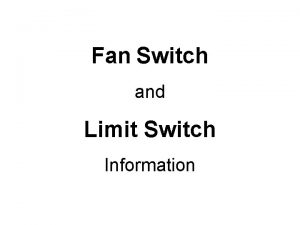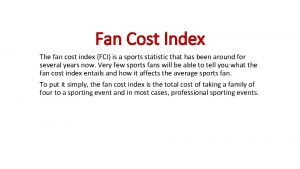The Ceiling Says Aim High The Fan Says




































































- Slides: 68

● ● ● ● The Ceiling Says: Aim High The Fan Says: Stay Cool The Mirror Says: Reflect Before You Act or Speak The Clock Says: Every Second Counts The Window Says: See the World in a New Light The Calendar Says: Be Up To Date The Door Says: Be Open to Opportunity and Push Hard To Achieve your Goals The Rack Says: Put New Things in Ur Life

Protect your Pride ● ● ● Timing: 15 minutes each team must design and build a structure that will protect the egg(that is the pride) from breaking when dropped from a height of about 10 feet onto a solid floor write a motto on a separate page for your group and each motto must be different from another group.

● ● Ask the teams what happened during the design and construction phase. Ask whether their design changed and why. Identify any positive individual contributions that you noticed during the task. Ask what each team (starting with the least successful) would do differently if they were to repeat the exercise.

In this game ● ● we communicate our ideas and share our problems we allocate our tasks and take responsibilities we cooperate and jointly involve to get the common goal one of us leads and motivates others

"United we stand, divided we fall. . . " Shushma Manandhar Deputy Director of Studies PSTD, NASC, Jawalakhel

Today we are covering ● ● ● Need of Team Work Group Dynamics and Team Roles Team Building Process and Skills

Everybody's Story ● ● ● This is a story about four people: Everybody, Somebody, Anybody, and Nobody. There was an important job to be done and Everybody was asked to do it. Everybody was sure Somebody would do it. Anybody could have done it, but Nobody did it. Somebody got angry about that because it was Everybody's job. Everybody thought Anybody could do it, but Nobody realized that Everybody wouldn't do it. It ended up that Everybody blamed Somebody when actually Nobody asked Anybody.



No matter how big the problem,




We need Teamwork to settle down those


Will you choose to be alone or in a group to write the following question ? ● What are the downsides of working in a group ? write at least 5 difficulties in 5 minutes.

Why do we join Teams ? What are the benefits and down sides of working in team ?

Benefits ● ● ● ● ● Better outputs Time saving Sharing ideas and learn new things Enhance knowledge and skills Building relationship Get protections Reduce stress Effective decisions Hide weakness Fun and enjoy

Downsides of a team ● ● ● ● Only a few people may contribute. They may dominate the group (others are silent, indifferent, afraid to contribute) Shy and introvert members can’t learn Different perceptions may lead to misunderstandings Arguments and disagreements may arise That may spoil the relationship Time and resources consuming

" "A team is a small number of people with complementary skills who are committed to a common purpose, performance goals, and approach for which they hold themselves mutually accountable"

Teams don’t work without teamwork. It is the glue which keeps a team together, the oil that makes the team work.

Team work ● “It is the ability to work together toward a common vision. It is the fuel that allows common people to attain uncommon results. ” -Andrew Carnegie ● It is the skill of mixing with people.

Team work skills Understanding others (think from other's side) Listening (listen first, speak second) Communicating (Questioning, answering, follow up) Persuading / participating Respecting/ acknowledging / trusting Helping / sharing

Able Leader Effective Team Supportive Members

"various activities undertaken to motivate and increase the overall performance of the team"

Activities within a TEAM Instructions Supervision Motivation Commitment towards task Communication Cooperation Trust/Respect

Stages in Team Building (American organizational psychologist Bruce Tuckman in 1965) 1. Forming 2. Storming 3. Norming 4. Performing 5. Adjourning

Forming ● ● ● Stage of initial orientation and interpersonal testing The members of the team get to know one another, Seeking and exchange some personal information, and make new friends Desire to be accepted by others Gathering impressions about each other

Storming ● ● Stage of conflict over the task and the way of operating Conflict arises for power, leadership and decision making competition and strained relationships among team members. (emotional and tensed) This is the most critical stage for the team.

Norming ● ● At this stage, come to a mutual plan for the team Agree with others to make the team function Roles are defined Rules, values, behaviour, method and procedures are established

Performing ● ● ● By this time, members are motivated and knowledgeable. Competent, autonomous and able to handle the decision-making process without supervision. Participative Strong commitment Achievement oriented

Adjourning (Deforming or Mourning) ● ● Task complete Revision, analysis and evaluation of achievements Strategies Disassembled

The story of hedgehogs The best relationship is not the one that brings together perfect people, but when each individual learns to live with the imperfections of others and can admire the other person's good qualities.

Group Dynamics and Roles ● ● Kurt Lewin, a social psychologist and change management expert, used the term "Group Dynamics" in early 1940 s first time. Expressed the roles and behaviours of people when they work in a group

Belbin's Team Role Theory ● ● ● Dr Meredith Belbin, a british researcher identified mainly 3 Team Roles Action Oriented- (Shaper, implementer, completer finisher) See obstacles as challenges, courageous to push things, extroverted and stimulate others. They put ideas and concepts into practical actions. Typically conservative, disciplined who work systematically and efficiently, perfectionist but may be inflexible and somewhat resistant to change.

cont. ● ● People Oriented(Coordinator, Team worker, Resource Investigator)Supportive and caring to the people. negotiator, flexible, diplomatic and popular but indecisive Extroverted, overly optimistic but lose enthusiasm quickly

cont. ● ● ● Thought Oriented(Plant, Monitor Evaluator, Specialist)Bring new ideas and concepts, innovators, knowledgeable, pride themselves for their ability, introverted, impractical, poor communicators, carefully weigh pros and cons, critical thinker, unemotional

There might be many characters in a team ● ● Lion (autocrat): tries to dominate or constantly interrupt Owl (show Off): talks and thinks as they know all the answers. Butterfly (opportunist): keeps changing the topic before others are ready. Hyena (aggressor): doesn't show respect to others, comments negatively about them.

● ● Sheep (avoider): refuses to focus on the task or on group relationship problems. Monkey (Critic): always sees the negative side to any argument, but never suggests alternatives. Puts down the ideas of others. Cat (help seeker): looks for sympathy from others Frog (Irritator): uses the group as a forum for inappropriate talk about self.

● ● ● Pigeon (Clown): shows no involvement in group and engages in distracting communication. Dog (loyal): obey his master without any hesitation Cow ( harmless): work in their own pace, don't hurt others but much chances of being hurt by others

Team Roles ● ● Edward De Bono's Six thinking hats (1985) (the father of lateral thinking) 1. White Hat - Facts and Figures ● Focusing on relevant objectives, data are available 2. Red Hat - Emotions and Feelings ● Explore any emotions provided valid information that also be considered.

Team Roles ● ● 3 Black Hat - Critical thinking. the devil's advocate. Ask what is wrong with it, why it will not work ? 4. Yellow Hat - speculative positive. Optimistic, highlight the potential benefits. Ask what if and take the idea further.

Team Roles ● ● 5. Green Hat - Creative and Lateral Think about related ideas. Try to make links and think new and different directions. Blue Hat - Control of thinking Think about the person (you) and team. Examine the process for approaching the problem.

Case

What will you do to make your team effective ● What are the elements ?

A boat does not go forward if each one is rowing their own way. So the target must be in same direction Group purpose must be the same (right direction-sai mandir)

For better Team Work There is no “I” in “TEAMWORK”. It’s less me more we So there should be collective effort

Strong Leadership - always at the top ● The more able leader, more effective the team.

Leader ● ● ● must have good vision, more knowledge, skill and tactics takes little more share of blame and less of credit is a facilitator, not only an order giver a good listener/ motivator does ordinary thing extra ordinarily

Understanding, Trust and Mutual Respect Feeling free to share opinions and problems Protecting and loyalty

Gaining trust in others, its not a easy job, but when you get it, things will be easier. ● ● ● ● How can be trust built ? Being Positive Fact Sharing Cooperation Responsiveness Commitment Caring and Respecting

Clear roles and responsibilities Proper knowledge and skill

Building Trust and Empathy ● ● Trust Brings respect and good interpersonal relation. Creates an easy and learning environment

Effective communication is a vital part of any team. Prompt and tactful communication can clear things in time ( the beggar) Communicate without hurting anyone's emotions (. . . the fence) It is a medium to tie the members in a harmony

Plan your project, your idea Well preparation is half done. Failing to plan = planning to fail Plan your work, work to plan

Have empathy Always put yourself in other's shoes, look the things from their side too. Cooperate

Never say, NO, that's not my job ! ● ● The strength of the team is each individual member… The strength of each member is the team.

Don't think that the problem is non of my business ( mouse trap) Face the problems and find out the solutions

No one is perfect, know the limitations When we have problem, don't blame it others, lets share it whatever if it is credit or blame.

Common faith Celebrate and reward team achievements

Do respect others, others respect you back Michael, If you can’t pass, you can’t play. Coach Dean Smith to Michael Jordan.

The greatest enemy in a TEAM is. . . Ego, so

Never let ego come into your group

Unity is the strength

Summing up ● Basic elements of effective teamwork Strong leadership Clear Roles and responsibilities Effective communication Collaboration Participative decision-making Commitment and accountability Learning and sharing Supervision and monitoring Flexibility


Any query ? sumisayemi@gmail. com

Appendix B: “Are We a Team? ” checklist (Levin & Kent, 2001) ● ● ● ● We all show equal commitment to our objective. We all take part in deciding how work should be allocated. We are committed to helping each other learn. We acknowledge good contributions from team members. We handle disagreements and conflicts constructively within the team. We are able to give constructive criticism to one another and to accept it ourselves. We all turn up to meetings and stay to the end. We are good at making sure that everyone knows what’s going on. When one of us is under pressure, others offer to help him or her. We trust each other. We remain united even when we disagree. We support each other to outsiders. We feel comfortable and relaxed with one another.
 Deu nexia fan sensornexia fan sensor
Deu nexia fan sensornexia fan sensor Fanout of cmos
Fanout of cmos Low floor high ceiling math tasks
Low floor high ceiling math tasks Dream crush big commerce
Dream crush big commerce Dream big aim high
Dream big aim high Aim high active
Aim high active Aim high academy trust
Aim high academy trust Binding price ceiling graph
Binding price ceiling graph Price ceiling and deadweight loss
Price ceiling and deadweight loss Binding price ceiling
Binding price ceiling Socially efficient quantity
Socially efficient quantity Glass ceiling glass escalator
Glass ceiling glass escalator Basal dan ceiling dalam tes binet
Basal dan ceiling dalam tes binet Woodcock johnson reading
Woodcock johnson reading An ideal spring is hung from the ceiling and a pan
An ideal spring is hung from the ceiling and a pan Binding price floor
Binding price floor Ceiling joists vs rafters
Ceiling joists vs rafters A block is suspended from the ceiling by a long
A block is suspended from the ceiling by a long A block is suspended from the ceiling by a long
A block is suspended from the ceiling by a long Ano ang ibang katawagan ng price ceiling
Ano ang ibang katawagan ng price ceiling Monopoly price ceiling
Monopoly price ceiling Wall and ceiling finishes
Wall and ceiling finishes Fixing stainless steel rib lath
Fixing stainless steel rib lath Sets and functions in discrete mathematics
Sets and functions in discrete mathematics Binding price floor
Binding price floor Tightly attached ceiling
Tightly attached ceiling Osha ceiling tile requirements
Osha ceiling tile requirements Standard ceiling drywall thickness
Standard ceiling drywall thickness Quay homophone
Quay homophone Tes binet
Tes binet What is ftens
What is ftens Ceiling effekt psychologie
Ceiling effekt psychologie Cal grant income ceiling 2020-21
Cal grant income ceiling 2020-21 Vineland-3 basal and ceiling rules
Vineland-3 basal and ceiling rules Steel truss camber diagram
Steel truss camber diagram Is rent control a price ceiling or floor
Is rent control a price ceiling or floor Interstitial ceilings are useful where:
Interstitial ceilings are useful where: Newtons second lwa
Newtons second lwa Two neutral conductors are connected by a wire
Two neutral conductors are connected by a wire When was by the waters of babylon written
When was by the waters of babylon written Gfta bell curve
Gfta bell curve Bald light bulb
Bald light bulb A loose spiral spring is hung from the ceiling
A loose spiral spring is hung from the ceiling Reflected ceiling plan specifications
Reflected ceiling plan specifications One mans ceiling is another mans floor
One mans ceiling is another mans floor If an effective ceiling price is placed on hamburgers, then
If an effective ceiling price is placed on hamburgers, then Envirotuff roof insulation
Envirotuff roof insulation Ygfc fan coil unit
Ygfc fan coil unit Submarine fan
Submarine fan Simple fan truss
Simple fan truss Ray fan plot
Ray fan plot Dunyoning yetti mo'jizasi 4-sinf
Dunyoning yetti mo'jizasi 4-sinf Rivojlanish psixologiyasi pdf
Rivojlanish psixologiyasi pdf Eng qadimgi davrlarda ta'lim tarbiya
Eng qadimgi davrlarda ta'lim tarbiya Anahaw fan
Anahaw fan Unducted fan engine
Unducted fan engine 1 in 12 turnout drawing rdso
1 in 12 turnout drawing rdso Lift fan drive shaft
Lift fan drive shaft Fan ho
Fan ho Yakshi bracket figure
Yakshi bracket figure Fan stilian noli jeta dhe vepra
Fan stilian noli jeta dhe vepra Chasm trap
Chasm trap Fan trap database
Fan trap database Characteristic of jellyfish
Characteristic of jellyfish Concept fan diagram
Concept fan diagram Conclusion of machine learning
Conclusion of machine learning Oracle fan
Oracle fan Fan pressure ratio
Fan pressure ratio Dyno cooling fan
Dyno cooling fan

